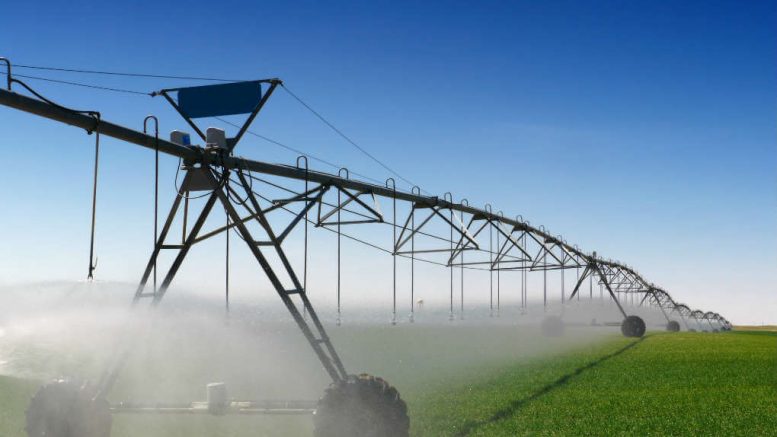“It is possible to save water and energy using digitalized irrigation by understanding how water is being made available to the crop and being able to irrigate only when necessary.”
Fabiane Kuhn is the CEO of Raks Tecnologia Agrícola, an electronics technician and a bachelor in computer science.
Raks Tecnologia Agrícola is a startup founded in 2017 that develops technologies to improve productivity in the agricultural sector and reduce waste of resources in the field.

Fabiane Kuhn, CEO of Raks Tecnologia Agrícola
AgriBrasilis – What is digitalized irrigation? For which crops is it appropriate?
Fabiane Kuhn – Irrigation allows greater climate resilience, withdrawing total dependence on rain for crop development in the field. Studies indicate that irrigated cultivation allows for production up to twice as high as rainfed agriculture. Irrigated beans stand for a great example. According to the National Water Agency, bean crop productivity increases from 1,290 kg/ha in rainfed conditions to 2,530 kg/ha when using irrigated management.
Digitalization of irrigation makes it possible to expand profitability even further, allowing only the water necessary for the development of the crop to be added, taking into account its growth stage and water demand, in addition to soil characteristics. The improvement in irrigation efficiency saves water and energy, providing the ideal humidity condition for the plant to develop its maximum potential.
Digitalized irrigation is indicated for any crop that has micro-sprinkler, drip, central pivot, reel and sprinkler irrigation. The higher the level of technological refining, the better the results at the end of season.
It is possible to save water and energy using digitalized irrigation by understanding how water is being made available to the crop and being able to irrigate only when necessary. Today we have cases where there was 30% savings, allowing a significant increase in the profitability of the crop.
AgriBrasilis – How is it possible to determine the right time and the amount of water needed for irrigation?
Fabiane Kuhn – To determine the right moment to irrigate, it is necessary to take into account four main aspects. The first of these is the type of soil, since water retention characteristics are different according to soil composition. In Brazil there are more than 14 types of soil. Often within the same property we can find great diversity, so we need to consider this aspect when indicating irrigation.
The second aspect is the crop itself, since each plant has its own water demand and within the same crop there are still variations in this demand according to the plant phase, its phenological stage. The third aspect that we must take into account is the operating capacity of the irrigation system, such as flow rate, energy restrictions and efficiency.
We also need to consider the climate aspect, which plays a significant role in the process, as we can avoid or reduce irrigation in times of rain. Therefore, with a system that monitors soil moisture and understands how this water is being made available to the plant, it is possible to relate the demand that must be supplemented with irrigation so that water is always easily available for consumption by the crop.
Productivity is affected by both excess and lack of water, as the plant goes through stress points in both cases. In this sense, there may be differences in productivity compared to the traditional method. However, this difference will be more noticeable in properties that subject the crop to these scenarios frequently.
AgriBrasilis – For which size of properties do you recommend digital irrigation?
Fabiane Kuhn – We currently have small, medium and large clients, working from 0.2ha properties to sites with 1,200 irrigated hectares. The cost-benefit is advantageous for all scenarios, in different crops.
Raks works with a service provision model, which encompasses all TDR (Time Domain Reflectometry) soil moisture equipment installed in the field, in addition to the agronomic management and support platform. The value of the service varies according to the size of the property, the type of crop and irrigation zones.

Humidity measurement sensors

